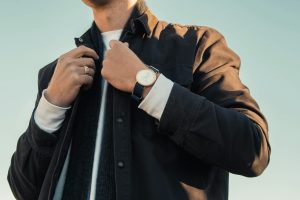Fungal Leather: Mycelium Handbags That Compost in 90 Days
Fashion has always been synonymous with luxury and excess. From designer clothes to high-end accessories, people all over the world crave the lavish lifestyle depicted by the fashion industry. However, with the rise of sustainability and ethical consumerism, the fashion world is now being challenged to rethink its practices. And in this quest for sustainability, a new innovative material is gaining attention – fungal leather made from mycelium, the underground network of fungi. These mycelium handbags not only offer a cruelty-free alternative to leather, but they also have the unique ability to fully compost in just 90 days. Let’s dive deeper into this revolutionary material and discover why it might just be the future of fashion.
The Rise of Fungal Leather
Traditional leather is obtained through the process of skinning and tanning animal hides, which has raised concerns about animal welfare and environmental impact. The chemicals used in the tanning process are toxic and have been linked to pollution and health issues. Additionally, the demand for leather has led to deforestation and habitat destruction in search of land for cattle grazing.
This is where fungal leather comes in. Mycelium, the root structure of fungi, can grow on a variety of agricultural waste products such as sawdust, hemp, and corn stalks. This makes it a sustainable and versatile material, requiring less resources and energy to produce compared to traditional leather. The mycelium is then grown into different shapes and sizes, providing endless possibilities for fashion designers.
Composting in 90 Days
One of the most impressive features of fungal leather is its ability to fully compost in just 90 days. This is due to the natural decomposition process of mycelium, which breaks down the material into organic matter. This means that at the end of its lifecycle, the handbag can be returned to the earth without leaving any harmful residues behind.
In contrast, traditional leather can take decades to decompose and releases harmful gases such as methane during the process. This not only contributes to greenhouse gas emissions but also pollutes the environment. With fungal leather, not only do we have a cruelty-free alternative, but also a sustainable one.
Style and Versatility
Despite being a relatively new material, fungal leather has made its way into the fashion world with its unique texture and properties. It can be molded into various shapes, making it a versatile choice for designers. The texture also closely resembles that of animal leather, making it a desirable option for those who want the look and feel of leather without the ethical and environmental concerns.
Moreover, as fungal leather is grown in a controlled environment, it eliminates the need for harmful chemicals and dyes that are used in the production of traditional leather. This means that the end product is not only sustainable but also free from toxic substances.
Challenges and Future Outlook
Although fungal leather seems like the perfect alternative, there are still some challenges that need to be addressed. The production process is still in its early stages, and scalability is a concern. Additionally, there is a lack of necessary equipment and infrastructure for mass production. However, with the increasing demand for sustainable and ethical products, these challenges can be overcome with investment and research.
The future looks bright for fungal leather as more and more fashion brands are incorporating it into their collections. From handbags and accessories to shoes and jackets, the possibilities are endless. The potential for this material to revolutionize the fashion industry is immense, and it could be the key to a more sustainable and ethical future.
In Conclusion
Fungal leather made from mycelium is a game-changer in the fashion industry. Its sustainable production process, ability to compost in 90 days, and versatility make it a desirable alternative to traditional leather. While there are still some challenges to overcome, the future looks promising for this innovative material. And as consumers become more conscious of their purchases, fungal leather could become the go-to choice for a guilt-free and stylish fashion statement.











